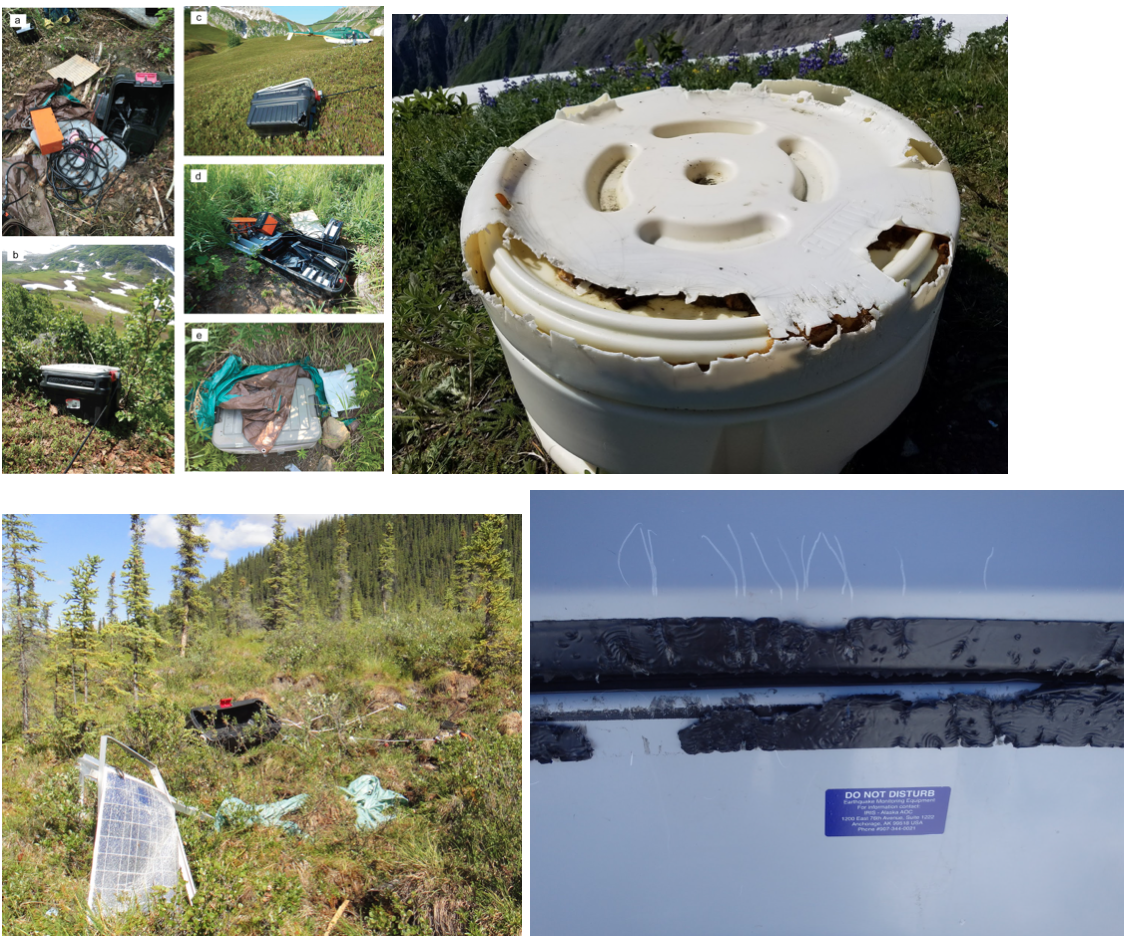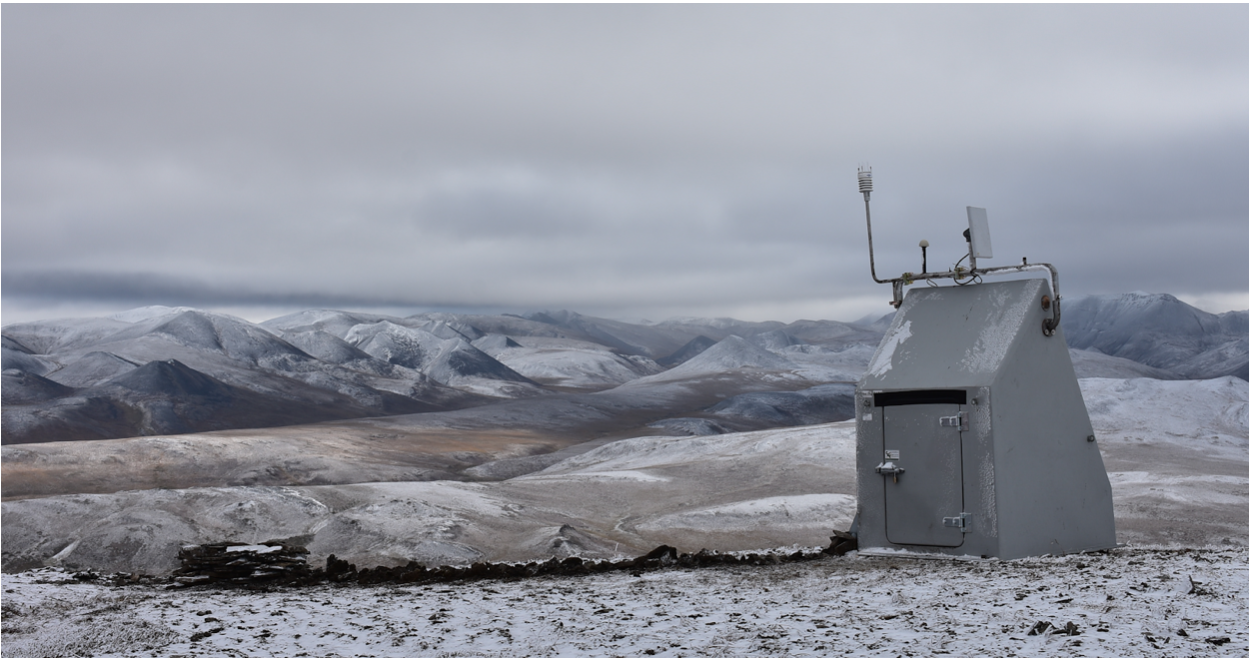As one of the world’s most seismically active regions, Alaska is well known for its earthquakes, and is currently home to the USArray Transportable Array, as well to permanent networks and many smaller seismic experiments that aim to understand the tectonics and seismicity of the state. Installing and maintaining these seismic stations is no small feat. Because much of Alaska is remote and inaccessible by road, technical staff have to be creative and do their work using helicopters, boats and other non-traditional forms of transport.
But, life for a seismic station in remote Alaska is far from lonely! Many animals encounter sites where seismic equipment has been installed but most animals like coyote, lynx, or moose, leave these sites alone after a cursory glance or sniff. In contrast, bears appear to be enticed to visit station sites and investigate the seismic equipment that looks and smells different than their surrounding landscape. Since bears can be found just about everywhere in mainland Alaska, this can be problematic for many Alaskan seismic stations, but particularly for those installed in very remote areas that are hard to get back to. Often the bears will just rub or scratch on the enclosure, which is a best case scenario for the equipment. But sometimes, bears will remove tarps or other coverings, dig up cables and gear boxes, chew into seismic vaults and destroy equipment enclosures, exposing delicate equipment to elements. Even instrumentation or enclosures that are still functional will often have toothmarks or claw scratches. Unfortunately, a few seismic stations are damaged to a degree where they can no longer collect or transmit seismic info, causing the loss of valuable scientific information.
.png)
So what is a seismologist to do? Researchers from University of Alaska Fairbanks, Colorado State University, and IRIS have compiled evidence of bear damage and activity from 3 different temporary seismic deployment projects as well as permanent seismic networks and the USArray Transportable Array (Tape et al., 2019). They looked at what type of damage stations experienced and how remote those stations were.

Different types of “bear protection measures” were implemented, like burying cables more deeply and putting all exterior cables in stronger pipes, using heavier station enclosures or boxes, and pouring Lysol over enclosures as a deterrent as suggested by a local boat captain. Testing new strategies like low-powered solar electric fencing was suggested for future deployments. While these measures increase the cost of individual site installations, they decrease the amount of time spent doing repairs and reduce the loss of critical scientific data.
In Alaska, earthquakes and bears are part of life. Hopefully these new “bear security measures” will help seismologists collect more data alongside these curious furry residents to learn more about earthquakes and tectonics in this dramatic frontier.

Citation
Tape, C., D. C. Heath, M. G. Baker, S. Dalton, K. Aderhold, and M. E. West (2019), Bear Encounters with Seismic Stations in Alaska and Northwestern Canada, Seismological Research Letters, 90, 1950-1970, DOI: 10.1785/0220190081.

Image 1. Transportable Array station G16K has had many different instances of bear damage over the years. On July 30, 2017, just two weeks after installation, IRIS’s Lead Engineer Doug Bloomquist reattaches the metal conduit that was pulled out along with the cable to the seismometer (Photo: Kasey Aderhold). The wellcap had considerable chew marks documented during a service visit on May 22, 2018, but the conduit remained attached (Photos: Jeremy Miner). On the May 14, 2019 service visit, the wellcap was fully ripped off, the conduit pulled out, and the sensor cable had chew marks on it, however the station was still functional and the data continued to flow (Photos: Jeremy Miner).
Image 2. While many seismic stations can peacefully collect data for years without disturbance, some stations can sustain heavy damage from determined critters. Here are a few examples of damage from bears at different kinds of stations. Photos provided by Carl Tape, Mike West, Michael Baker, and Ryan Bierma.
Image 3. Transportable Array station C18K located near the Utukok River Valley is dusted with a recent snowfall during installation on August 29, 2017. Photo credit: Maria Sanders